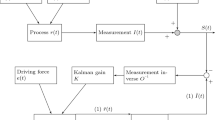Abstract
An attempt is made to defend a general approach to the spatial content of perception, an approach according to which perception is imbued with spatial content in virtue of certain kinds of connections between perceiving organism’s sensory input and its behavioral output. The most important aspect of the defense involves clearly distinguishing two kinds of perceptuo-behavioral skills—the formation of dispositions, and a capacity for emulation. The former, the formation of dispositions, is argued to by the central pivot of spatial content. I provide a neural information processing interpretation of what these dispositions amount to, and describe how dispositions, so understood, are an obvious implementation of Gareth Evans’ proposal on the topic. Furthermore, I describe what sorts of contribution are made by emulation mechanisms, and I also describe exactly how the emulation framework differs from similar but distinct notions with which it is often unhelpfully confused, such as sensorimotor contingencies and forward models.
Similar content being viewed by others
References
Aitken S., Bower T.G.R. (1982). The use of the sonicguide in infancy. Visual Impairment and Blindness 76: 91–100
Berkeley, G. (1948). An essay towards a new theory of vision. In A. A. Luce, & T. E. Jessop (Eds.), The works of George Berkeley, Bishop of clyone, Vol. 1. London: Thomas Nelson and Sons, Ltd.
Bower T.G.R. (1977). Blind babies see with their ears. New Scientist 73: 255–257
Bryson A.E. Jr., Ho Y.C. (1969). Applied optimal control: Optimization, estimation, and control. Waltham, MA, Blaisdell
Buneo C.A., Andersen R.A. (2006). The posterior parietal cortex: Sensorimotor interface for the planning and online control of visually guided movements. Neuropsychologia 44: 2594–2606
Clark A. (2006). Cognitive complexity and the sensorimotor frontier. Proceedings of the Aristotelian Society, Supplemental Volume 80(1): 43–65
Cussins A. (1992). Content, embodiment and objectivity: The theory of cognitive trails. Mind 101(404): 651–688
Desmurget M., Grafton S. (2000). Forward modeling allows feedback control for fast reaching movements. Trends in Cognitive Sciences 4(11): 423–431
Duhamel, J.-R., Colby, C., & Goldberg, M. E. (1992). The updating of the representation of visual space in parietal cortex by intended eye movements. Science, 255(5040), 90–92
Eliasmith, C., & Anderson, C. (2003). Neural engineering: Computational, representation, and dynamics in neurobiological systems. MIT Press.
Evans, G. (1985). Molyneux’s question. In G. Evans (Ed.), The collected papers of Gareth Evans. London: Oxford University Press.
Grush, R. (1995). Emulation and cognition. PhD Dissertation, UC San Diego Cognitive Science and Philosophy, UMI.
Grush, R. (1997). The architecture of representation. Philosophical Psychology, 10(1), 5–25.
Grush, R. (1998). Skill and spatial content. Electronic Journal of Analytic Philosophy, 6(6). (http://www.ejap.louisiana.edu/EJAP/1998/grusharticle98.html)
Grush R. (2000). Self, world and space: the meaning and mechanisms of ego- and allocentric spatial representation. Brain and Mind 1(1): 59–92
Grush R. (2004a). The emulation theory of representation: motor control, imagery, and perception. Behavioral and Brain Sciences 27(3): 377–396
Grush R. (2004b). Author’s response: Further explorations of the empirical and theoretical aspects of emulation theory. Behavioral and Brain Sciences 27(3): 425–442
Grush R. (2005). Internal models and the construction of time: Generalizing from state estimation to trajectory estimation to address temporal features of perception, including temporal illusions. Journal of Neural Engineering 2(3): S209–S218
Grush R. (2007a). Berkeley and the spatiality of vision. Journal of the History of Philosophy 45(3): 413–442
Grush, R. (2007b). Space, time and objects. In J. Bickel (Ed.), The Oxford handbook of philosophy and neuroscience. Oxford University Press.
Heil J. (1987). The Molyneux question. Journal for the Theory of Social Behavior 17: 227–241
Ito M. (1970). Neurophysiological aspects of the cerebellar motor control system. International Journal of Neurology 7: 162–176
Kalman R.E. (1960). A new approach to linear filtering and prediction problems. Journal of Basic Engineering 82(d): 35–45
Kalman R., Bucy R.S. (1961). New results in linear filtering and prediction theory. Journal of Basic Engineering 83(d): 95–108
Kawato M. (1999). Internal models for motor control and trajectory planning. Current Opinion in Neurobiology 9, 718–727
Kelly, A. (1994). A 3D state space formulation of a navigation Kalman filter for autonomous vehicles. Techinical Report, CMU-RI-TR-94–19, Robotics Institute, Carnegie Mellon University.
Mel, B. W. (1986). A connectionist learning model for 3-d mental rotation, zoom, and pan. In Proceedings of Eighth Annual Conference of the Cognitive Science Society, pp. 562–571.
Mel, B. W. (1988). MURPHY: A robot that learns by doing. In Neural information processing systems (pp. 544–553). New York: American Institute of Physics.
Noë A. (2004). Action in perception. Cambridge, MA, MIT Press
Noë, A. (2006). Précis of action in perception. Electronic Journal, 12(1).
Pouget A., Sejnowski T. (1997). Spatial transformations in the parietal cortex using basis functions. Journal of Cognitive Neuroscience 9(2): 222–237
Pouget A., Deneve S., Duhamel J.-R. (2002). A computational perspective on the neural basis of multisensory spatial representation. Nature Reviews: Neuroscience 3: 741–747
Rao R.P.N. (1999). An optimal estimation approach to visual perception and learning. Vision Research 39: 1963–1989
Scholl, B. J. (2001). Objects and attention: the state of the art. Cognition, 80, 1–46.
Wertheimer M. (1912). Experimentelle Studien über das Sehen von Bewegung. Zeitschrift für Psychologie 61: 161–265
Wolpert D.M., Ghahramani Z., Randall Flanagan J. (2001). Perspectives and problems in motor learning. Trends in Cognitive Sciences 5(11): 487–494
Zipser D., Andersen R.A. (1988). A back-propagation programmed network that simulates response properties of a subset of posterior parietal neurons. Nature 331(6158): 679–684
Author information
Authors and Affiliations
Corresponding author
Rights and permissions
About this article
Cite this article
Grush, R. Skill theory v2.0: dispositions, emulation, and spatial perception. Synthese 159, 389–416 (2007). https://doi.org/10.1007/s11229-007-9236-z
Accepted:
Published:
Issue Date:
DOI: https://doi.org/10.1007/s11229-007-9236-z




